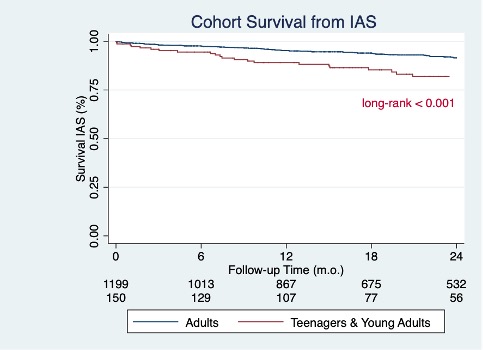|
J. Vogler1, A. Gasperetti2, A. Traub1, F. Fastenrath3, S. Guletta4, M. Schiavone2, A. Breitenstein5, M. Laredo6, P. Palmisano7, G. Mitacchione8, P. Compagnucci9, L. Kaiser10, S. Hakmi10, A. Angeletti11, D. Ricciardi12, S. De Bonis13, R. Arosio2, M. Casella13, L. Santini14, C. Pignalberi15, A. Piro16, C. Lavalle16, E. Pisanò17, I. Olivotto18, M. Viecca2, A. Curnis7, N. Badenco6, A. Dello Russo19, C. Tondo20, J. Kuschyk3, M. Biffi11, G. B. Forleo2, R. R. Tilz1
|
|
1Medizinische Klinik II / Kardiologie, Angiologie, Intensivmedizin, Universitätsklinikum Schleswig-Holstein, Lübeck; 2Luigi Sacco University Hospital, Mailand, IT; 3I. Medizinische Klinik, Universitätsklinikum Mannheim, Mannheim; 4San Raffaele Hospital, IRCCS, Mailand, IT; 5Universitäres Herzzentrum, UniversitätsSpital Zürich, Zürich, CH; 6Hôpital de la Salpêtrière (Hôpitaux Universitaires Pitié Salpêtrière - Charles Foix), Paris, FR; 7Hospital "Card. G. Panico", Tricase LE, IT; 8Cardiologica, Spedali Civili Brescia, Brescia, IT; 9Università Politecnica delle Marche, Ancona, IT; 10Kardiologie, Asklepios Klinik St. Georg, Hamburg; 11Cardiology, IRCCS, Department of Experimental, Diagnostic and Specialty Medicine,, Sant’Orsola Hospital, University of Bologna, Bologna, IT; 12Anzio-Castrovillari Hospital, Castrovillari, Castrovillari, IT; 13Cardiology and Arrhythmology Clinic,, University Hospital “Umberto I-Salesi-Lancisi”, Ancona; 14Cardiologica, Ospedale G.B. Grassi, Lido di Ostia, IT; 15Cardiologica, Ospedale San Filippo Neri, Roma; 16Cardiologica, Policlinico Umberto I, Rom, IT; 17Cardiologica, Vito Fazzi Hospital, Lecce, IT; 18Cardiomyopathy Unit,, Careggi University Hospital, Florenz, IT; 19Cardiology and Arrhythmology Clinic,, University Hospital “Umberto I-Salesi-Lancisi”, Ancona, IT; 20Heart Rhythm Center,, Monzino Cardiology Center, IRCCS, Mailand, IT;
|
Background: The subcutaneous implantable cardioverter defibrillator (S-ICD) has become an alternative to transvenous ICDs (tv-ICD) in patients without a need for pacing. There is little evidence directly comparing the rates of inappropriate shocks (IAS) in young vs old S-ICD recivpients.
Purpose: to assess differences in device-related complications and inappropriate shocks (IS) between teenager/young adult and adult recipient of a subcutabeous implantable cardioverter defibrillator (S-ICD) device.
Methods: all S-ICD recipients in the ELISIR project were enrolled in the current study. Patients were classified into teenagers + young adults (12–30 years old) vs adults (> 30 years old), depending from patient age at device implantation. Rates of device-related complications and IS were compared between the cohorts.
Results: a total of 1491 patients were extracted from the ELISIR project. Teenagers and young adults represented 11.0% of the registry (n=51 teenagers; n=113 young adults). Patients were followed-up for a median of 22.4 [11.6–36.8] months. A total of 110 (7.4%) device related complications were observed, with no age-related differences. Overall, 133 (8.9%) patients experienced inappropriate S-ICD shocks (Figure 1). IAS resulted more frequent in the teenager and young adult cohort (15.9% vs 8.0%; p=0.001). At univariate analysis, young age was associated with IAS, but after correcting for differences in arrhythmic substrate, only a trends toward significance was observed (aHR: 1.559 [0.962–2.572]; p=0.071). The use of SMART pass algorithm was instead associated to a strong reduction in IAS (aHR 0.291 [0.198–0.438]; p<0.001).
Conclusion: The use of S-ICD in teenagers/young adults resulted safe and effective, with the rate of complications between teenagers/young adults and adults was not significantly differing. Although a higher rate of IAS was observed in the teenagers/young adults, when accounting for differences in baseline substrate and comorbidities, young age did not result associated with an increased risk of IS.

|